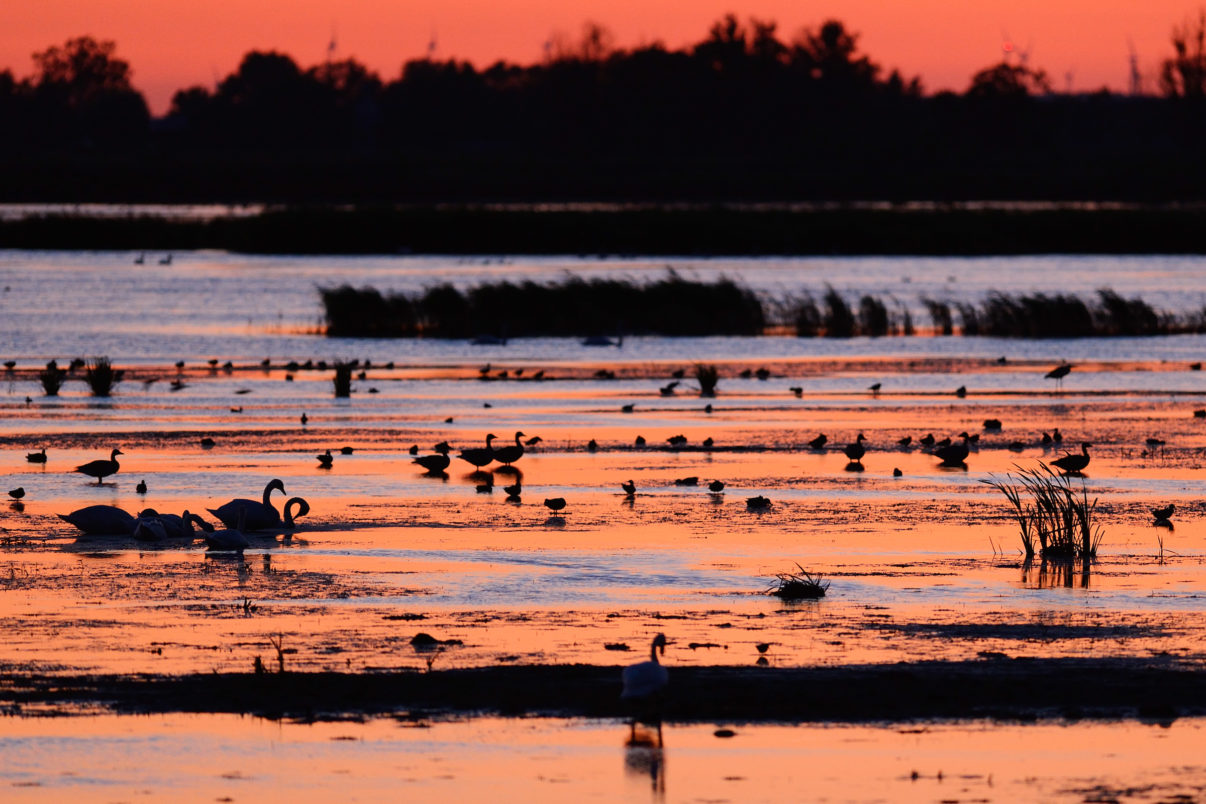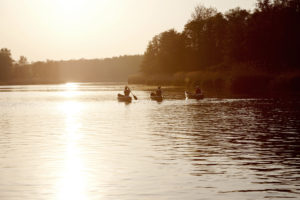The Bargischow Polder is one of the latest areas to be rewetted on the German side of the Oder Delta. The restoration of this strategically sited peatland will aid wildlife comeback and mitigate climate change.

 Rewilding boost
Rewilding boost
The rewilding of the Oder Delta on the German side has just taken a step forward as the rewetting of the 440-hectare Bargischow Polder gets underway. Having begun in July, the complex rewetting process will last until 2023. A combination of pumping, dam building and dyke relocation will eventually transform this area of peatland from a source of carbon dioxide into a carbon sink, create new, biodiversity-rich habitat, and boost local nature-based tourism.
“The rewetting of the Bargischow peatland, which aligns with the rewilding vision of the entire Oder Delta, will bring multiple benefits to both people and wild nature,” says Stefan Schwill, Chairman of the Rewilding Oder Delta board. “As part of a series of polder rewettings on the German side, the project helps to maintain rewilding progress and I look forward to seeing its positive impact.”
The Bargischow rewetting project will cost 5.5 million euros, and is being carried out as part of environmental compensation measures for the Nord Stream 2 pipeline, which will carry gas under the Baltic Sea from Russia to Germany. The pipeline is scheduled for completion by the end of 2019.
Wildlife comeback

The Bargischow polder is part of a larger, 1000-hectare peatland polder, which itself is connected to the Anklamer Stadtbruch Nature Reserve, a vast area of shallow pools and boggy peatland located south of where the Peene River enters the Szczecin Lagoon. A haven for wildlife, the entire area is home to numerous rare and iconic species, such as the white-tailed eagle, Eurasian crane, otter, beaver and moor frog.
“The rewetting of the Bargischow Polder completes the connection between the Anklamer Stadtbruch and other reflooded areas in the Peene Valley,” explains Schwill. “As the habitat changes so species such as the white-tailed eagle, beaver, numerous waterbirds and plants will undoubtedly benefit. This, in turn, will help the area’s burgeoning nature-based tourism industry.”
Climate change mitigation
In the past the Bargischow Polder was heavily drained for agriculture, with many areas now sitting up to one metre below the mean water level of the Peene River. Hydraulic engineering work will see a newly constructed dam separate the rewetted polder from the surrounding area, with pumping stations renewed and roads and bike paths relocated.
“This rewetting project will see the natural water conditions of the peatland restored,” explained Daniela Degen-Lesske, Managing Director of the Mecklenburg-Vorpommern Land Company (which is overseeing the rewetting) at the groundbreaking ceremony in July. “Adjusting the water level through pumping will prevent further decomposition of the peat.”
In their natural wet state, living peatlands sequester carbon dioxide, drawing it down from the atmosphere through plants, especially sphagnum mosses, reeds and sedges, and trapping itunderground as carbon. But when they are drained for agriculture and forestry – as with the Bargischow Polder – the organic matter decays, turning long-submerged carbon into carbon dioxide and adding large amounts of greenhouse gases to the atmosphere.
Piece of the puzzle
One of the most exciting wild areas of north-central Europe, the 250,000-hectare Oder Delta, of which the Bargischow Polder is just one tiny part, is a jigsaw of land, sea and freshwater ecosystems. Divided between Germany and Poland, these are centred in and around the Stettin Lagoon, a large inland lake where the Oder River flows into the Baltic Sea.
As a result of ongoing rewilding actions – carried out by Rewilding Europe and a range of other organisations – wildlife has begun to thrive in more natural densities in the delta, with uncontrolled natural processes reshaping the environment. Much of the work of the Rewilding Oder Delta team has so far focused on restoring fish migration, with the presence of healthy fish populations vital to local food chains. The area has seen the comeback of moose, gray wolf, beaver and many other species, with more to come.
Tourism destination

As a result of its wildlife comeback, the Oder Delta is becoming increasingly well-known as a rewilding area and prominent nature tourism destination. The Rewilding Oder Delta team and local partners have also started work on several pilot business projects here, based on the exploration of nature-based economic opportunities.
The European Safari Company recently began offering tours of the Peene River and Anklamer Stadtbruch, allowing visitors to see rewilding at work and experience the dramatic wild nature of the delta first-hand.
Want to know / experience more?
- Learn more about the work of Rewilding Europe in the Oder Delta
- Visit the Rewilding Oder Delta Facebook page
- Experience Oder Delta rewilding with the European Safari Company

